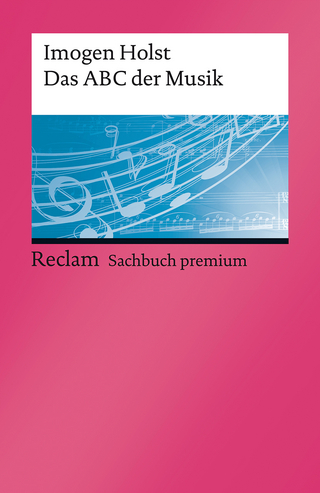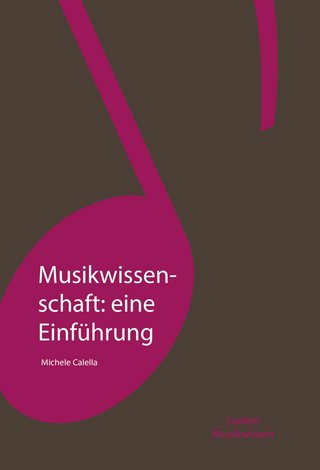
Teaching Music to Students with Autism
Oxford University Press Inc (Verlag)
978-0-19-985676-3 (ISBN)
Teaching Music to Students with Autism provides a comprehensive study of the education of students with autism within the music classroom. The book is designed for music educators, music teacher educators, and all those who have an interest in the education of students with autism. The authors focus on the diagnosis of autism, advocating for students and music programs, and creating and maintaining a team approach when working with colleagues. A significant portion of the book is focused on understanding the communication, cognition, behavior, sensory, and socialization challenges inherent in working with students with autism. The authors suggest ways to structure classroom experiences and learning opportunities for all students. Vignettes and classroom snapshots from experienced teachers provide additional opportunities to transfer theory to real-life application.
Dr. Alice M. Hammel is on the music faculties of Virginia Commonwealth and James Madison Universities. Dr. Ryan Hourigan is Associate Professor and Associate Director of the School of Music at Ball State University.
Foreword by Marilyn Friend ; Chapter 1 ; What is Autism? An Explanation of the Diagnosis ; Autism Spectrum Disorders: Diagnostic Information ; Change in Diagnostic Criteria ; Characteristics or Features of Autism ; How do I know I am Teaching a Student with Autism? ; Early Intervention ; Typical Interventions and Treatment Models ; Applied Behavior Analysis and Discrete Trial Training (ABA) ; Treatment and Education of Autistic and Related Communication-Handicapped Children (TEACCH) Curriculum ; DIR/Floortime ; Cognitive Coaching ; Social Stories ; Conclusion ; Discussion Questions ; Chapter 2 ; A Team Approach to Teaching Music to Students with Autism ; Learning about your Student (s) with Autism ; Learning about other Educators and Therapists, and Professionals in the District ; Building Relationships with Parents ; Building Relationships with other Staff Members ; Administrative Support ; Participation in Meetings ; Understanding the Least Restrictive Environment and a Student with Autism ; A Student Profile Revisited ; Conclusion ; Discussion Questions and Suggested Activities: ; Chapter 3 ; Understanding Communication and Students with Autism ; in the Music Classroom ; Unique Communication Characteristics of Persons with Autism ; Complications with Eye Gaze or Eye Contact ; Eye Contact and Theory of Mind ; Inattentiveness and Eye Contact ; Echolalia ; Joint Attention ; Receptive and Expressive Language Skills ; Receptive Language ; Expressive Language Development (Cause and Effect) ; Strategies for Music Educators in Expressive and Receptive Language ; Steps to Affective Communication with Students with Autism in the Music Classroom ; Step 1-Eye Contact ; Step 2-Joint Attention ; Step 3-Reciprocation ; Augmentative and Alternative Communication (AAC) for Students with Autism ; Communication Interruptions (a failure to communicate) ; Social Stories ; Conclusion ; Discussion Questions ; Chapter 4 ; Understanding Cognition and Students with Autism in the Music Classroom ; Theory of Mind and Cognition ; Weak Central Coherence ; Strategies for Assisting with Central Coherence Challenges in the Music Classroom ; Executive Function ; Joint Attention (as it relates to cognition) ; Musical Cognition, Perception, and Response in Students with Autism ; Conclusion ; Discussion Questions: ; Chapter 5 ; Classroom Behavior and Students with Autism ; Child Behavior Development and Students with Autism ; Understanding Applied Behavior Analysis (ABA) and Discrete Trial Training (DTT) ; Outbursts, Meltdowns, and other Disruptions ; The Antecedent ; The Behavior ; The Consequence of the Behavior ; Odd or Repetitive Behavior ; Behavior and Communication ; Schedule, Routine and the Link with Behavior ; Creating a Behavior Plan for Students with Autism ; Social Skills and Behavior ; Related Medical Issues and Behavior ; Conclusion: Assessment of Behavior (taking data for the IEP) ; Discussion Questions: ; Chapter 6 ; Understanding Socialization of Students with Autism in the Music Classroom ; The Fundamentals of Social Development and Children with Autism ; Gaze/eye-contact and Joint Attention and Socialization ; Extending Eye Contact and Joint Attention in the Music Classroom ; Social Speech and Social Play ; Social Speech and Social Play in the Music Classroom ; Affective Development ; Affective Development in the Music Classroom ; Imitation ; Peer Relationships and Social Interaction ; Peers Relationships and Social Interaction in the Music Classroom ; Reverse Inclusion ; Conclusion ; Discussion Questions ; Chapter 7 ; Autism, Sensory Dysfunction, and Music Education ; Tactile Challenges in the Music Classroom ; Vestibular and Proprioceptive Challenges in the Music Classroom ; Visual Dysfunction ; Auditory Sensitivity and Dysfunction ; Sensory Motor/Motor Planning/Dyspraxia ; Sensory Breaks (Conclusion) ; Discussion Questions ; Chapter 8 ; Advocacy for Students with Autism in Music Education ; Fostering Relationships with All Stakeholders ; Parents ; Special Education Administrators ; Classroom Teachers ; Conditions for Music Learning for Students with Autism ; Learning Environment ; One-on-one Support ; Multiple Ways to Demonstrate Knowledge ; Teacher Qualities that Must Exist in Music Classrooms ; Local Community Not for Profit Organizations ; Public "Informances" Including Students with Autism ; Student Support and Awareness Groups ; Conclusion ; Discussion Questions: ; Chapter 9 ; Classroom and Ensemble Snapshots of Teaching Music to Students with Autism ; Classroom-based Examples of Teaching Music to Students with Autism ; Performance-based Examples of Teaching Music to Students ; Conclusion ; Chapter 10 ; Resources for Music Teachers in Teaching Music to Students with Autism ; Section 1: Internet Resources ; Internet Resources Pertaining to Persons with Autism ; Online Autism Communities ; Autism Apps ; Internet Resources Pertaining to Persons with Asperger Syndrome ; Internet Resources Pertaining to Persons with Rett Syndrome ; Section 2: Print Resources for Music Educators and Music Teacher Educators ; Research within music education pertaining to students with autism ; Dissertations within Music Education and Music Therap ; Books Within Music Therapy and Music Education ; Books Within General Education ; Practitioner Articles Within Music Education ; About the Authors ; Index
| Zusatzinfo | 7 b&w halftones; 25 line drawings |
|---|---|
| Verlagsort | New York |
| Sprache | englisch |
| Maße | 231 x 155 mm |
| Gewicht | 318 g |
| Themenwelt | Kunst / Musik / Theater ► Musik ► Musiktheorie / Musiklehre |
| Schulbuch / Wörterbuch | |
| Medizin / Pharmazie ► Medizinische Fachgebiete ► Psychiatrie / Psychotherapie | |
| Sozialwissenschaften ► Pädagogik ► Sonder-, Heil- und Förderpädagogik | |
| Sozialwissenschaften ► Soziologie | |
| ISBN-10 | 0-19-985676-1 / 0199856761 |
| ISBN-13 | 978-0-19-985676-3 / 9780199856763 |
| Zustand | Neuware |
| Haben Sie eine Frage zum Produkt? |
aus dem Bereich


